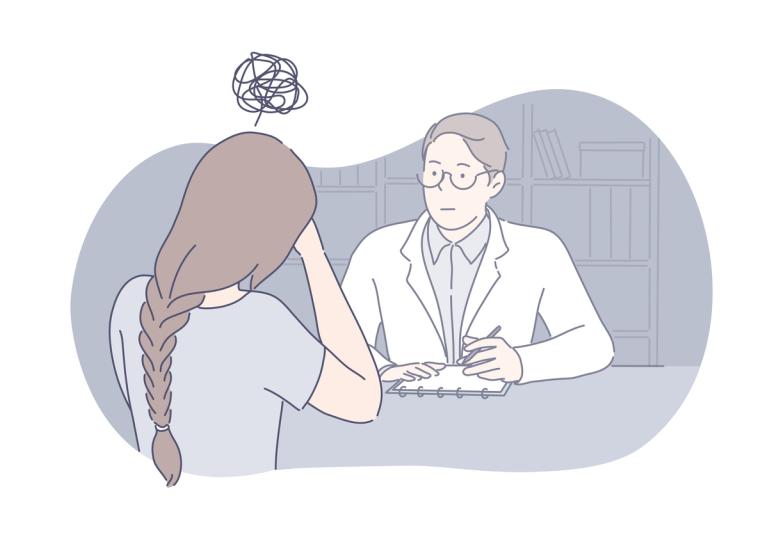In an Industry sponsored symposium titled “Optimising long-acting therapy use in schizophrenia” at the 35th ECNP Congress in Vienna, Austria (15th−18th Oct), Prof David Taylor (King’s College, London, UK) discussed how therapeutic plasma levels with long-acting therapies (LAT) are best achieved with continued dosing, but caution needs to be taken to make sure a patient is not on a higher dose than needed. Dr Eduard Parellada (University of Barcelona Hospital Clínic de Barcelona, Barcelona, Spain) discussed how the use of LATs in patients with schizophrenia has several advantages, including a lower rate of relapse, fewer hospitalisations, greater health related quality of life and higher functionality. Prof Martha Sajatovic (Case Western Reserve University School of Medicine, Cleveland, USA) then discussed more practical aspects of LAT initiation, including the need for physician and patient education to overcome potential barriers and the use of informed, shared decision-making.
Pharmacokinetic considerations for long-acting therapies
Conventional, first-generation, long-acting therapies (LATs) generally reach high plasma levels following the first few days of administration, then taper down over the next few weeks. This may mean, discussed Prof Taylor, that the therapeutic effect required is only maintained for a few days.1,2
Therapeutic plasma levels are more often obtained when a patient is treated with a course of therapy over a longer time period.1,3 However, one of the dangers of attempting to gain a therapeutic plasma level with a series of doses of first-generation LATs is that a patient’s response and tolerability might be judged on the initial doses, but with subsequent doses, drug plasma levels increase to those far above what is needed for a clinical response.4 “This means,” said Prof Taylor, “that a patient might receive a much higher dose of a typical LAT than is absolutely necessary.” A historic paucity of studies regarding dosing meant that some first-generation LATs have large indicated dose ranges.5 With newer, second-generation, LATs, the difference between the lowest and highest effective doses are usually much closer.6 This is important, Prof Taylor reported, as when plotting a dose-response curve, far lower doses than sometimes used clinically can be as effective as higher doses.7
“It’s recognised,” said Prof Taylor, “that long-acting injections are the future for schizophrenia and other long-standing severe mental illnesses”
With second-generation LATs, while oral treatment may be needed when therapy is initiated until a steady state is reached, in general, dose levels are more steadily maintained above the therapeutic threshold, including at the time when the next injection is needed.8 Of note though, with some depot injections, the full steady state plasma levels may not be obtained until a number of weeks following initiation, which might lead to higher doses than needed being administered initially.9
One study showed that relapse prevention was achievable sooner and with lower doses of an LAT compared to its oral equivalent.10 This is probably, observed Prof Taylor, due to the presence of the drug in the body even after a dose is missed with an LAT. A potential issue with LATs though, is patients missing injections or having them later than planned. Prof Taylor’s study of compliant and non-compliant patients found that relapse was positively correlated with the number of injections given over a year.11
Advantages of long-acting therapies
Naturalistic studies show that up to 80% of first-episode psychosis patients relapse in the 5 years following remission.12 This finding is important as relapse is associated with the development of treatment resistance.13 Relapses are most often due to lack of adherence to a medication, meaning, said Dr Parellada, that after a relapse, it is vital for patients to have enhanced relapse prevention efforts including psychoeducational support and an LAT.14
Patients receiving LATs are more likely to continue treatment.15 A large real-world study including 29,823 patients with schizophrenia found that LATs were associated with the highest rates of relapse prevention and lowest rates of hospitalisation compared to oral formulations.16 This is reflected in findings from randomised controlled trials.17 Additionally, mortality risk has been shown to be reduced with the use of second-generation LATs and18 LAT use is associated with improvements in functionality, quality of life19 and caregiver burden.20
Long-acting antipsychotic treatment is associated with fewer relapses,16 lower rates of suicide21 and decreased mortality risk18
Following discharge, suicide is a high risk in patients with schizophrenia.22 This is increased in patients who are non-adherent to medication.23 With this in mind, Dr Parellada suggested that “LATs may have some role in suicide prevention, because we can modify some of the risk factors associated with this, such as commanding hallucinations, aggression, substance abuse and poor adherence.”21
Dr Parellada also discussed how tolerability with LATs is no worse than with oral antipsychotics,24 with the benefit-risk ratio of second-generation LATs found in one study to be greater than first-generation LATs or oral antipsychotics.25 Finally, he discussed the increased encouragement of the use of LATs when there is limited access to healthcare, such as happened during the COVID-19 pandemic26 or in rural regions.27
Practical considerations for long-acting therapy initiation
Medication adherence, said Prof Sajatovic, is generally suboptimal but is often non-intentional.28-30 It may be that the patient simply forgets or is distracted when the time comes to take their medication; they may be experiencing apathy or amotivation; they may not have a good understanding of their medication regimen; they may live in a chaotic environment and there may be a lack of family and social support.29-31
“LATs continue to be underutilised in clinical settings,” said Prof Sajatovic
Studies suggest that fewer than 20% of eligible patients with poor adherence are administered an LAT32 and that approaching half of patients receiving oral antipsychotics do not know much about this form of medication.33 There are a number of common barriers to LAT use. For the prescriber, such barriers include titration and dosing concerns, sustaining LAT use and knowledge of patient eligibility. For the patient, barriers may include stigma, lack of ongoing support and a lack of information about LATs. For the care system, integration with virtual health care, costs and formulary access may be barriers.34,35
Prof Sajatovic cited several reasons why patients may not be offered LATs and discussed how prescribers may have significantly more negative views of LATs compared to patients.36 These include that poor response due to non-adherence may be interpreted as the antipsychotic used not being suitable, so a different formulation isn’t offered;37 that only severe patients are eligible for LATs; that it’s thought a patient may refuse an injection or may feel coerced into receiving a long-term treatment or that there is stigma attached to using an LAT.33,34
In an expert consensus survey to inform LAT decision-making, Prof Sajatovic and her colleagues found that patients who may be selected for LATs first-line were more likely to be those with poor insight into their illness; those with a history of violence, suicide attempts, a substance use disorder or multiple hospitalisations for psychosis; and younger adults (18−25 years old). Those administered an LAT as a second line treatment were more likely to have good psychosocial support and insight into their illness; be older or younger than the aforementioned population; in good remission; or who were medically unstable where adverse events of some medications were of concern.35 With this in mind, Prof Sajatovic discussed how “We need to think differently about what we have historically been calling ‘second line treatments’ and should we take a different approach and not just reserve LATs for the people that have already had a lot of complications and negative sequalae.”
A multipronged approach, including prescriber education and shared decision-making with the patient, is needed to help long-acting antipsychotic treatment initiation
The need for LAT initiation, said Prof Sajatovic, should be based more on preventative measures, ascertained by examining factors such as patient age, family support, adherence and response to oral antipsychotics, number of relapses and illness duration.38 She also discussed one of her own studies and her centre’s ‘Multilevel Facilitation of Long-Acting Antipsychotic Medication Program’ (MAP) where prescribers were given a ‘not receiving optimum benefit’ checklist to help identify patients who may benefit from an LAT. These included those who had missed doses of their oral antipsychotic, had been trialled with more than two antipsychotics in the previous year, had been hospitalised or had a crisis visit in the past 12 months and/or were not satisfied with their clinical levels of symptoms.39
As part of MAP, prescribers are educated on the use of LATs and how to engage the patient using shared decision-making, as well as on best practices for dose initiating, adjustment and maintenance and how to manage barriers to LAT use, such as stigma, familiarity and injection site pain. A study of MAP use found that patients with higher checklist scores had a higher likelihood of benefitting from a switch to an LAT and that the multi-pronged approach increased LAT use.39
Shared decision-making is an important part of LAT initiation, highlighted Prof Sajatovic, and she discussed how in her practice patients are asked about their goals for recovery, what barriers are encountered with oral medications and how LAT could help with achieving recovery goals and overcome barriers. Also important with asking a patient to consider an LAT is using decision support tools, such as weighing up the risks and benefits of oral medications over an LAT.39
Prof Sajatovic concluded by highlighting how normalising LAT use for patients by providing a supportive setting and peer role models can help improve uptake.
Educational financial support for this Satellite symposium was provided by Janssen Pharmaceutical Companies of Johnson & Johnson.
Our correspondent’s highlights from the symposium are meant as a fair representation of the scientific content presented. The views and opinions expressed on this page do not necessarily reflect those of Lundbeck.




